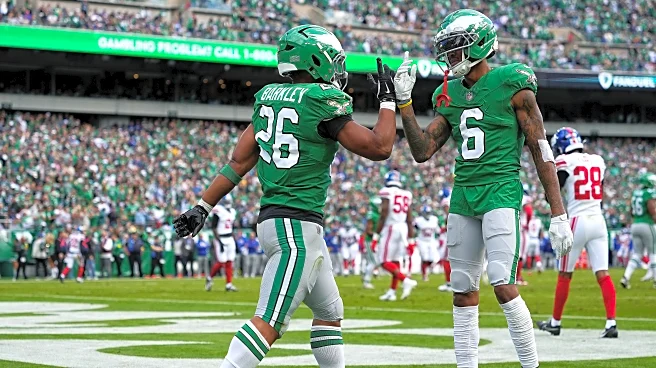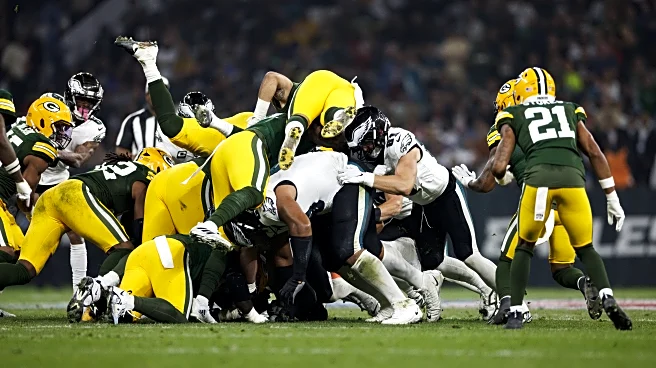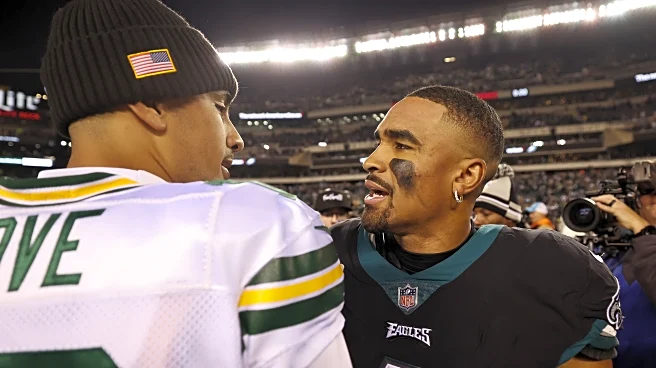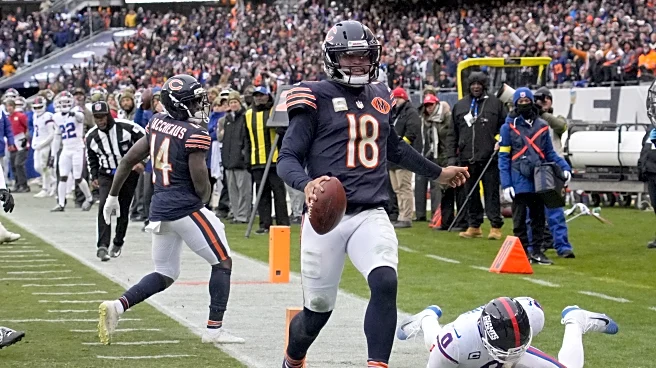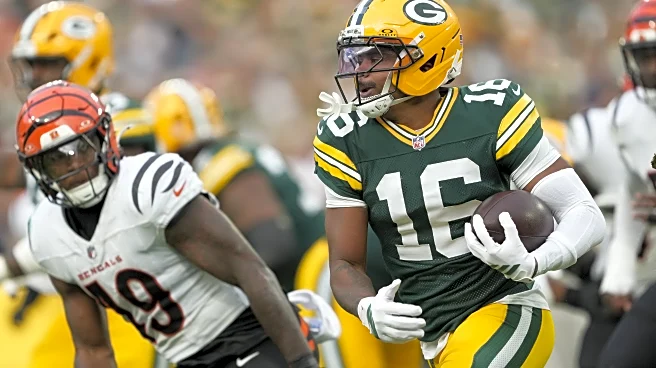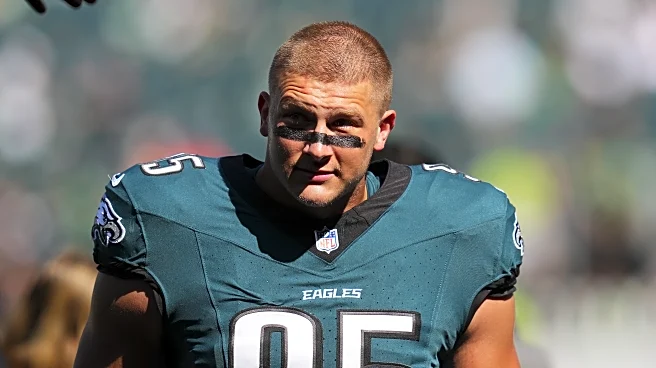What's Happening?
Myles Garrett, the Cleveland Browns' star pass rusher, has publicly dismissed rumors linking him to a potential trade to the Philadelphia Eagles. Despite speculation during the NFL trade deadline, Garrett clarified that he is not concerned with any trade involving
himself or other players. Earlier this year, Garrett requested a trade from the Browns, seeking to join a team with Super Bowl aspirations. However, he later re-signed with the Browns on a four-year, $160 million contract, making him the highest-paid non-quarterback in NFL history. As the Browns face a challenging season with a 2-6 record, Garrett remains focused on his performance, having achieved 10 sacks, 22 tackles, and one forced fumble this season.
Why It's Important?
The denial of trade rumors by Myles Garrett is significant for both the Browns and the Eagles. For the Browns, retaining Garrett is crucial as he is a key defensive player and a cornerstone of their team. His presence is vital for any future rebuilding efforts or attempts to improve their current standing. For the Eagles, the speculation highlights their ongoing search for a strong pass rusher, which they addressed by acquiring Jaelan Phillips and bringing back Brandon Graham. Garrett's decision to stay with the Browns impacts the dynamics of the NFL trade market, where star players are increasingly seen as movable assets.
What's Next?
While Garrett remains with the Browns, the team's performance and future decisions will be closely watched. The Browns may need to reassess their strategy and roster to better align with Garrett's aspirations for a competitive team. Meanwhile, the Eagles will continue to evaluate their defensive lineup following their recent acquisitions. The NFL trade market may see further activity as teams adjust their rosters in response to ongoing performance challenges and strategic goals.
Beyond the Headlines
Garrett's situation underscores the evolving nature of player contracts and team dynamics in professional sports. The willingness of teams to trade high-profile players reflects a shift towards more flexible and strategic roster management. This trend may influence future contract negotiations and player mobility, potentially leading to more dynamic and unpredictable team compositions.


